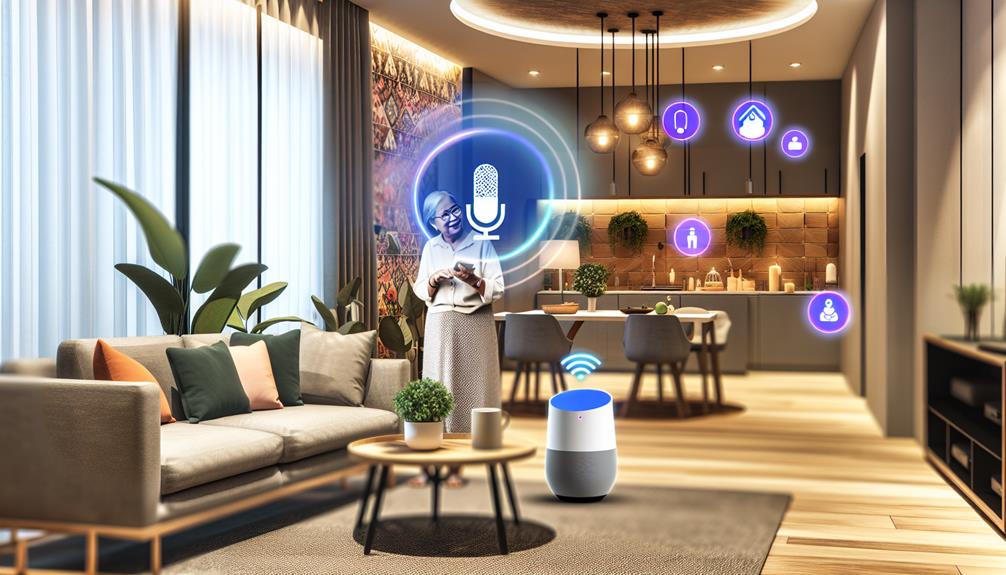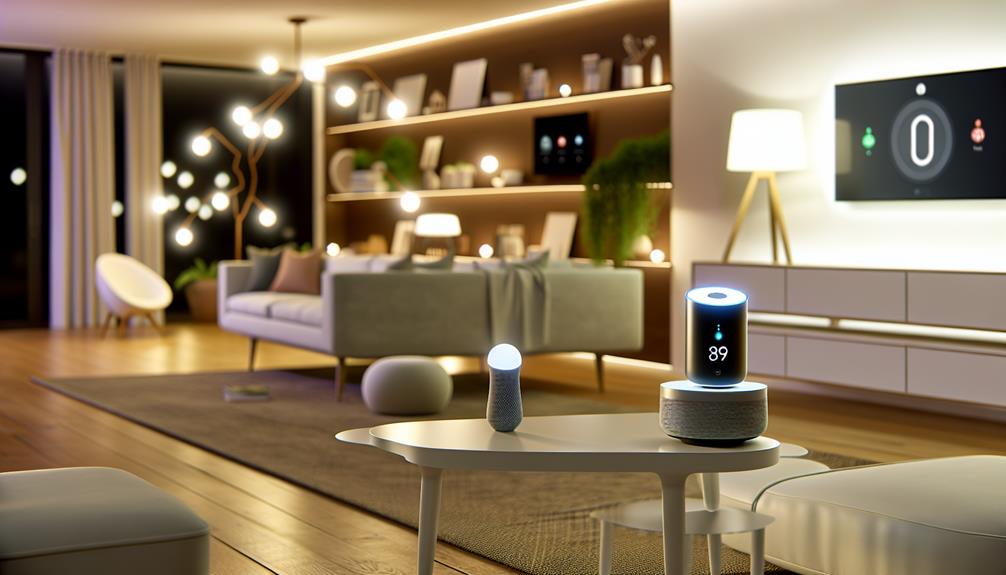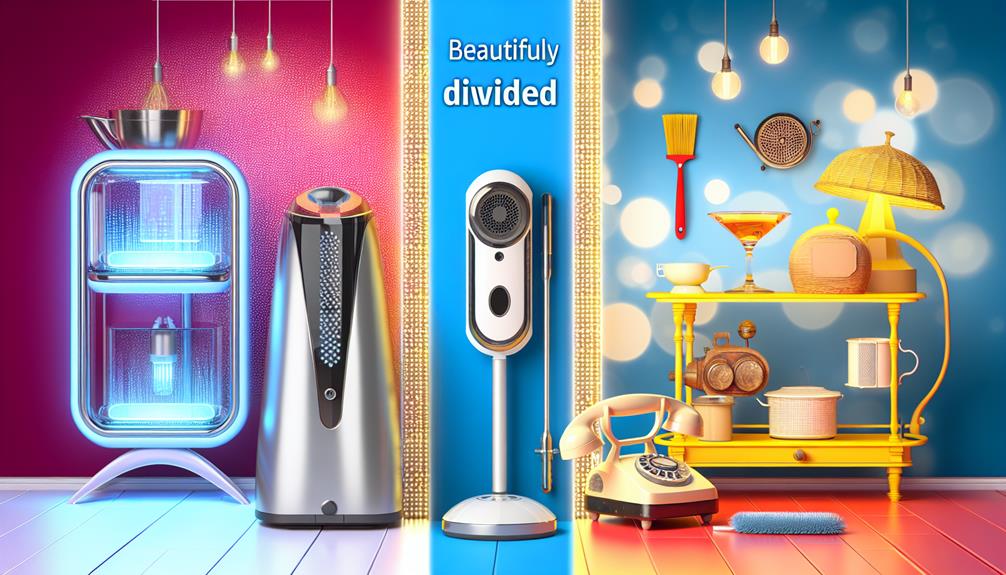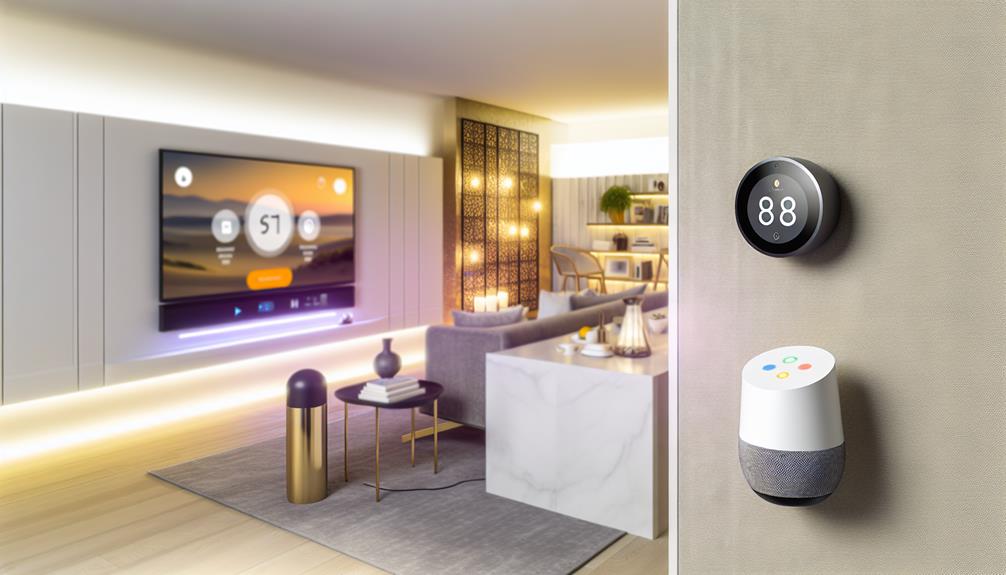Transform Elderly Care With Smart Home Innovations**
As the population ages, the integration of smart home technologies in elderly care presents an opportunity to greatly improve the well-being and autonomy of seniors. With innovations such as AI-driven monitoring systems and automated safety features, caregivers can enhance their support while allowing older adults to maintain a greater sense of independence. However, the implementation of these technologies raises critical questions about accessibility, privacy, and the overall impact on traditional caregiving practices. Exploring these complexities may reveal not only the potential benefits but also the challenges that lie ahead in this evolving landscape.
Key takeaways
- Smart home devices enhance elderly care by promoting safety, independence, and overall well-being for seniors living at home.
- Telehealth integration and AI technologies enable personalized care plans and proactive health monitoring for better management of chronic conditions.
- Voice assistants and home automation devices empower seniors to manage daily tasks and control their environment effortlessly.
- Fall detection systems and remote monitoring technologies provide caregivers with immediate alerts, ensuring timely assistance during emergencies.
- Future innovations in wearable technology and smart ecosystems will further enhance real-time monitoring and community connections for seniors.
Benefits of Smart Home Devices
Smart home devices frequently offer a range of benefits that greatly enhance the quality of care for the elderly. These innovations create an environment that promotes safety, independence, and overall well-being. One significant advantage is the potential for cost savings. By integrating smart technology, families can reduce the need for costly in-home care services or expensive emergency interventions. For instance, automated monitoring systems can alert caregivers to unusual behaviors or emergencies, thereby minimizing risks and associated expenses.
Moreover, smart home devices provide crucial caregiver support, allowing family members or professional caregivers to manage elderly care more effectively. With features such as remote monitoring, caregivers can keep track of essential signs and daily activities, ensuring timely intervention when necessary. This not only improves the quality of care but also alleviates some of the emotional burdens that caregivers often face.
Additionally, the ability to customize smart home settings fosters a sense of belonging and autonomy for elderly individuals. By allowing them to control their environment—be it through lighting, temperature, or entertainment—smart devices empower seniors to live comfortably and independently, enhancing their overall quality of life.
Key AI Technologies in Elderly Care
In the domain of elderly care, various AI technologies are revolutionizing how support is delivered to seniors. Central to this transformation is telehealth integration, which allows healthcare providers to monitor and engage with patients remotely. This technology not only enhances accessibility but also guarantees that seniors receive timely medical attention, thereby fostering a sense of security and belonging within their communities.
Another critical AI technology is personalized care algorithms, which analyze individual health data to create tailored care plans. By leveraging machine learning, these algorithms can predict potential health issues, enabling proactive interventions. This not only improves health outcomes but also empowers seniors to take an active role in managing their well-being.
Additionally, AI-powered voice assistants facilitate daily tasks, reminding seniors of medication schedules or upcoming appointments, which promotes independence while guaranteeing adherence to care plans. The integration of these technologies creates a more connected environment, reducing feelings of isolation often experienced by the elderly.
Ultimately, the adoption of key AI technologies in elderly care is paving the way for a more compassionate and efficient support system, fostering a sense of belonging and enhancing the overall quality of life for seniors.
Essential Smart Gadgets for Seniors
Technology has become an invaluable ally in enhancing the lives of seniors, with various essential gadgets designed to promote safety, independence, and well-being. These smart devices leverage innovations in smart health to provide extensive support, making daily routines easier and more secure.
One of the most beneficial gadgets is the voice assistant, which facilitates hands-free operation for tasks like setting medication reminders and making emergency alerts. Additionally, fall detection systems offer peace of mind through remote monitoring, allowing caregivers to respond swiftly in case of accidents.
Furthermore, home automation devices enhance social connectivity by enabling seniors to control their environment effortlessly, fostering a sense of autonomy. Below is a summary of essential smart gadgets for seniors:
| Gadget Type | Key Features |
|---|---|
| Voice Assistants | Medication reminders, emergency alerts |
| Fall Detection | Automatic alerts to caregivers |
| Smart Health Monitors | Remote monitoring of crucial signs |
| Home Automation | Control lighting, temperature |
These innovations not only promote safety but also encourage engagement and connectivity, critical for maintaining a fulfilling lifestyle. Embracing these technologies can greatly improve the quality of life for seniors, allowing them to thrive in their own homes.
Enhancing Safety With Automation
Automating safety features in the home can considerably reduce risks for elderly residents, creating an environment that is both secure and comfortable. A primary concern for caregivers and families is the potential for falls, which can lead to severe injuries. Implementing smart home technologies with integrated fall detection systems empowers seniors to live independently while ensuring prompt assistance when needed. These systems utilize sensors to identify unusual movements or sudden falls, automatically alerting caregivers or emergency services.
In addition to fall detection, remote monitoring technologies enhance safety by allowing family members or healthcare professionals to oversee the well-being of elderly individuals from afar. Through the use of cameras, wearables, and smart devices, caregivers can monitor essential signs, daily activities, and overall safety. This constant oversight fosters peace of mind and enables timely interventions when necessary.
Furthermore, smart home automation can streamline everyday tasks, such as controlling lighting and temperature, reducing the likelihood of accidents. By integrating these safety measures, families can create a supportive atmosphere that encourages independence while prioritizing the health and security of their loved ones.
Ultimately, automation serves as an essential tool in enhancing safety for elderly residents.
Future Trends in Smart Home Innovations
The landscape of smart home innovations is rapidly evolving, driven by advancements in artificial intelligence, machine learning, and IoT connectivity. As the population ages, the demand for solutions that enable aging in place is increasing. Future trends are likely to focus on enhancing the quality of life for seniors while ensuring their safety and independence.
One significant trend is the integration of advanced remote monitoring systems that utilize wearable technology. These devices will continuously track essential signs and activity levels, providing real-time data to caregivers and family members. This connectivity fosters a sense of community, allowing loved ones to remain informed and engaged in the well-being of the elderly.
Moreover, smart home ecosystems will increasingly leverage machine learning to personalize environments. For instance, adaptive lighting and climate control systems can adjust automatically based on individual preferences and health conditions.
Additionally, voice-activated assistants will play a more central role, enabling seniors to command their homes effortlessly while reducing feelings of isolation.
These innovations will not only support aging in place but also create a more inclusive environment where seniors feel valued and connected to their families and communities.
Frequently Asked Questions
How Much Do Smart Home Devices Cost for Elderly Care?
Smart home device pricing varies widely, with affordability often influenced by features and brand. Conducting a device pricing comparison reveals options ranging from budget-friendly solutions to high-end systems, ensuring accessibility for diverse income levels in elderly care.
Are Smart Home Devices Easy for Seniors to Use?
Smart home devices are designed with user-friendly interfaces and voice-activated controls, making them accessible for seniors. These features facilitate ease of use, promoting independence while enhancing the overall quality of life for elderly individuals.
Can Smart Home Technology Reduce Caregiver Workload?
Smart home technology can considerably reduce caregiver workload through automated reminders and health monitoring systems. These innovations enhance efficiency, allowing caregivers to focus on personalized support while ensuring the well-being of seniors in their care.
What Are the Privacy Concerns With Smart Home Devices?
Privacy concerns with smart home devices primarily revolve around data security and surveillance risks. Unauthorized access to personal information can lead to breaches of privacy, necessitating robust security measures to protect sensitive user data and foster trust.
How Can Families Monitor Elderly Loved Ones Remotely?
Families can utilize remote monitoring technologies, such as video calls and health monitoring apps, to stay connected with elderly loved ones. This approach fosters effective family communication, ensuring timely assistance and emotional support regardless of physical distance.



